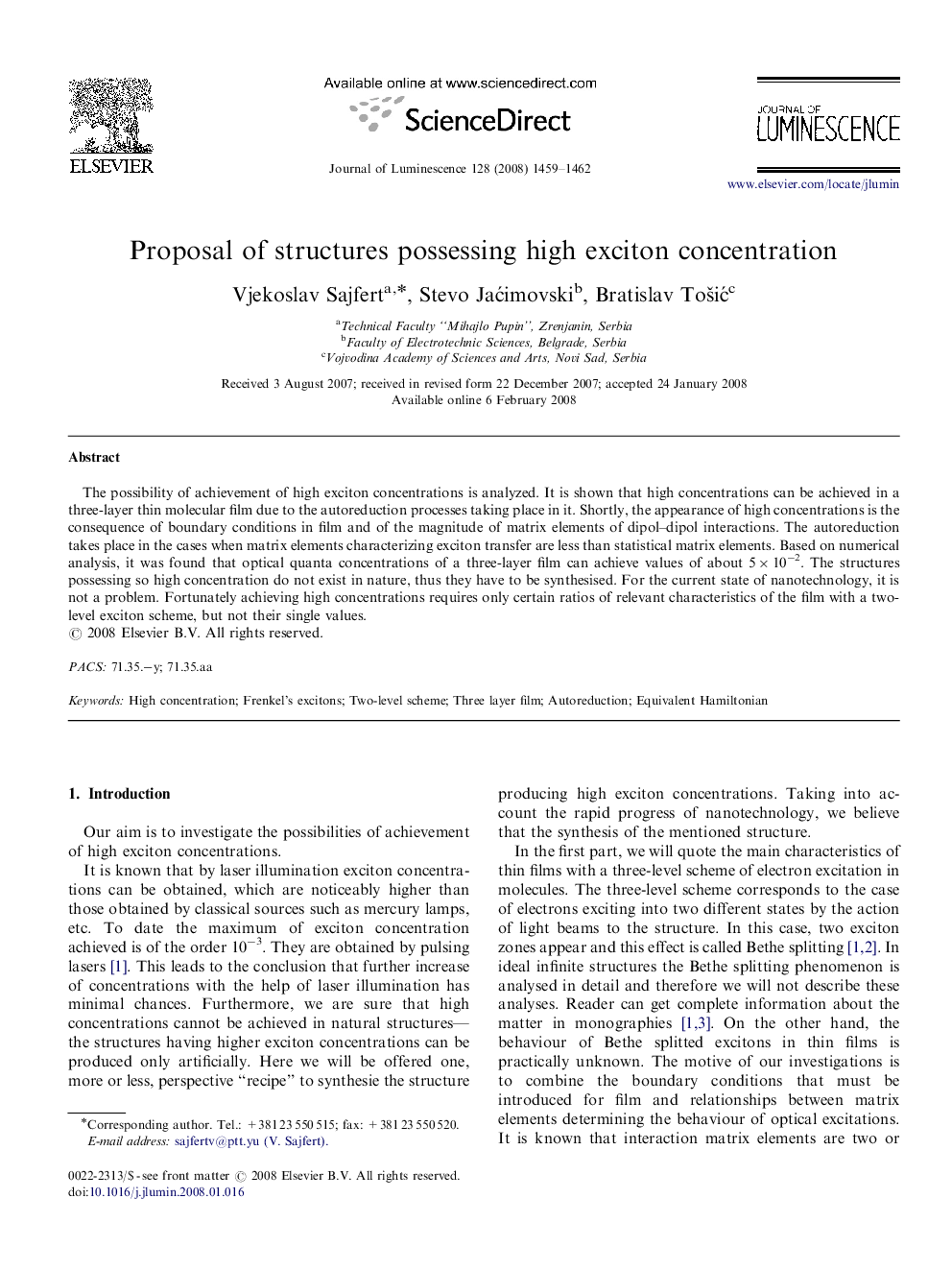| Article ID | Journal | Published Year | Pages | File Type |
|---|---|---|---|---|
| 5403471 | Journal of Luminescence | 2008 | 4 Pages |
Abstract
The possibility of achievement of high exciton concentrations is analyzed. It is shown that high concentrations can be achieved in a three-layer thin molecular film due to the autoreduction processes taking place in it. Shortly, the appearance of high concentrations is the consequence of boundary conditions in film and of the magnitude of matrix elements of dipol-dipol interactions. The autoreduction takes place in the cases when matrix elements characterizing exciton transfer are less than statistical matrix elements. Based on numerical analysis, it was found that optical quanta concentrations of a three-layer film can achieve values of about 5Ã10â2. The structures possessing so high concentration do not exist in nature, thus they have to be synthesised. For the current state of nanotechnology, it is not a problem. Fortunately achieving high concentrations requires only certain ratios of relevant characteristics of the film with a two-level exciton scheme, but not their single values.
Related Topics
Physical Sciences and Engineering
Chemistry
Physical and Theoretical Chemistry
Authors
Vjekoslav Sajfert, Stevo JaÄimovski, Bratislav ToÅ¡iÄ,
